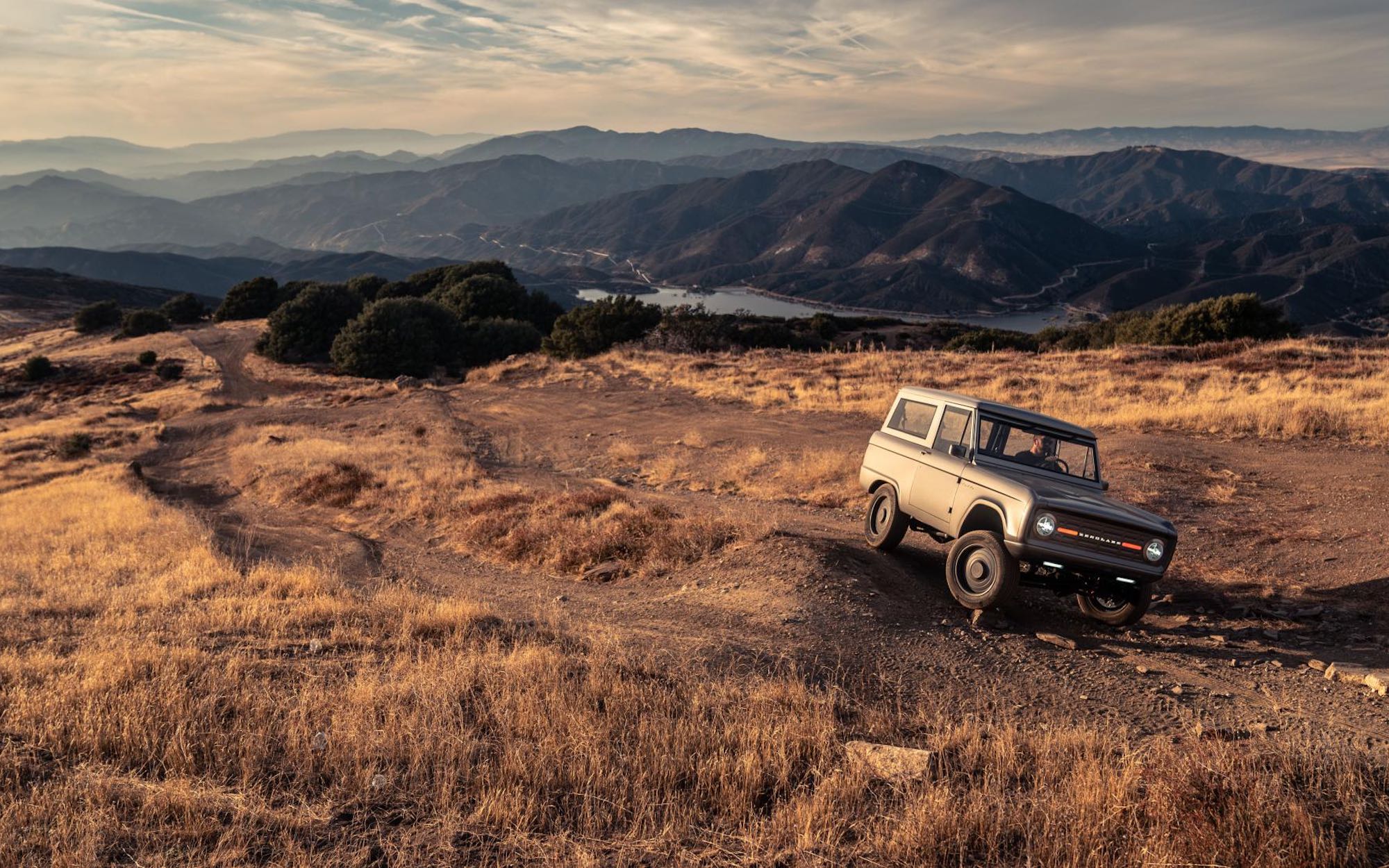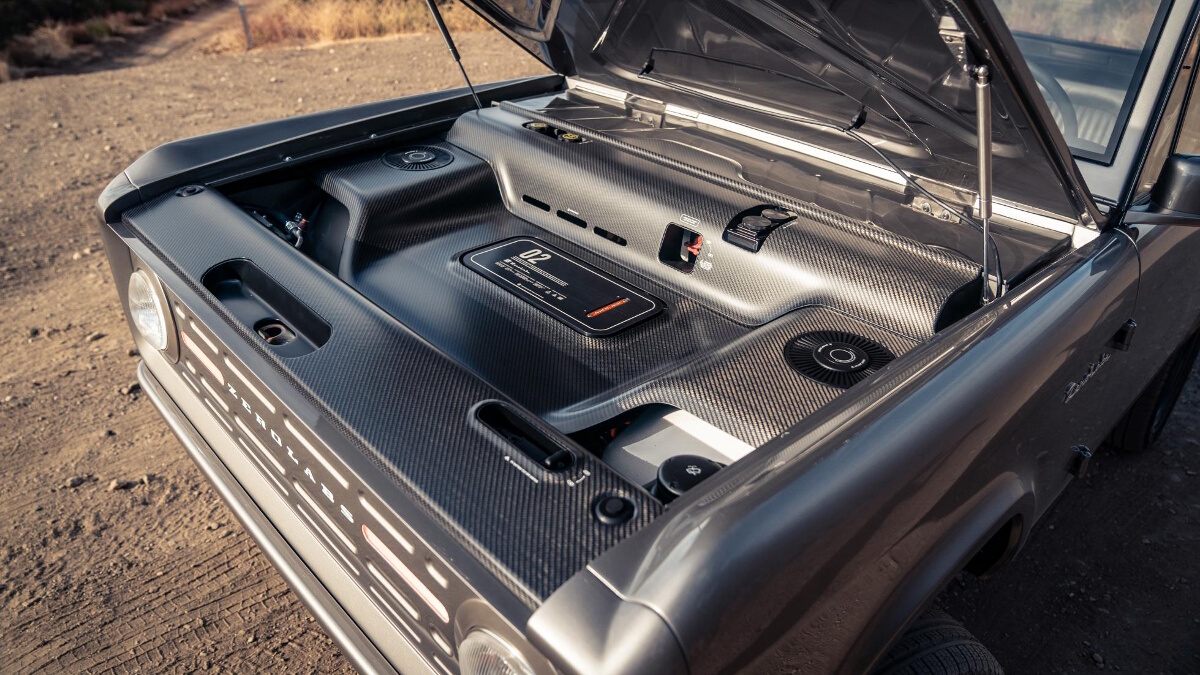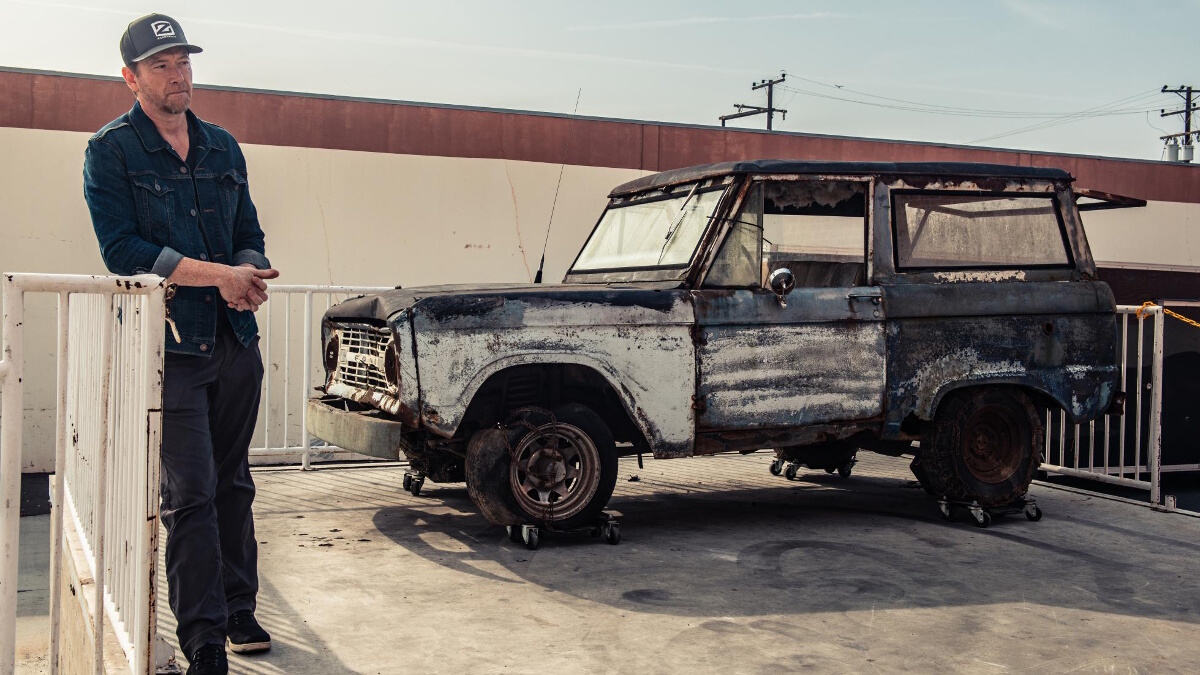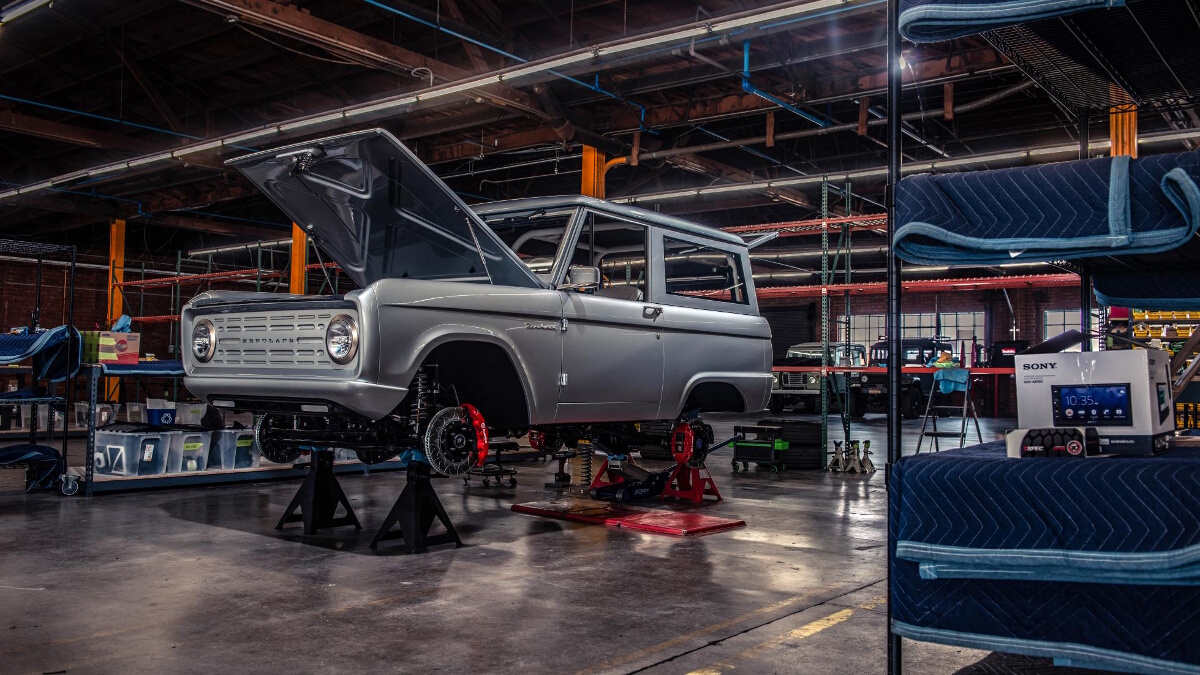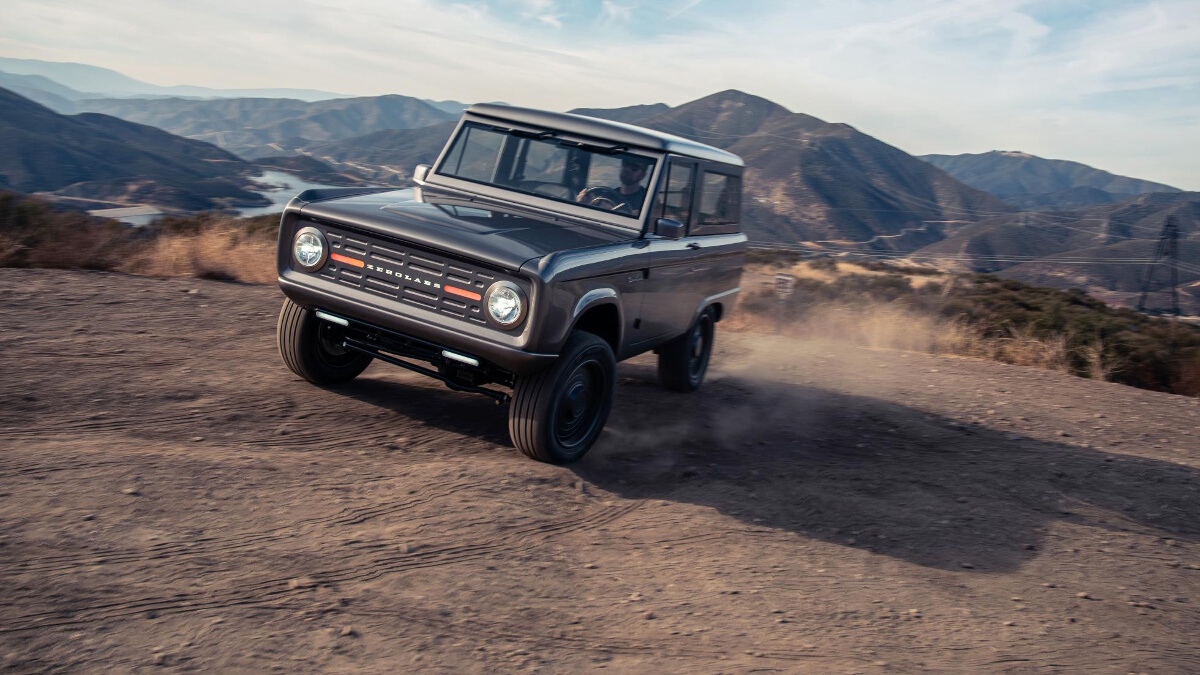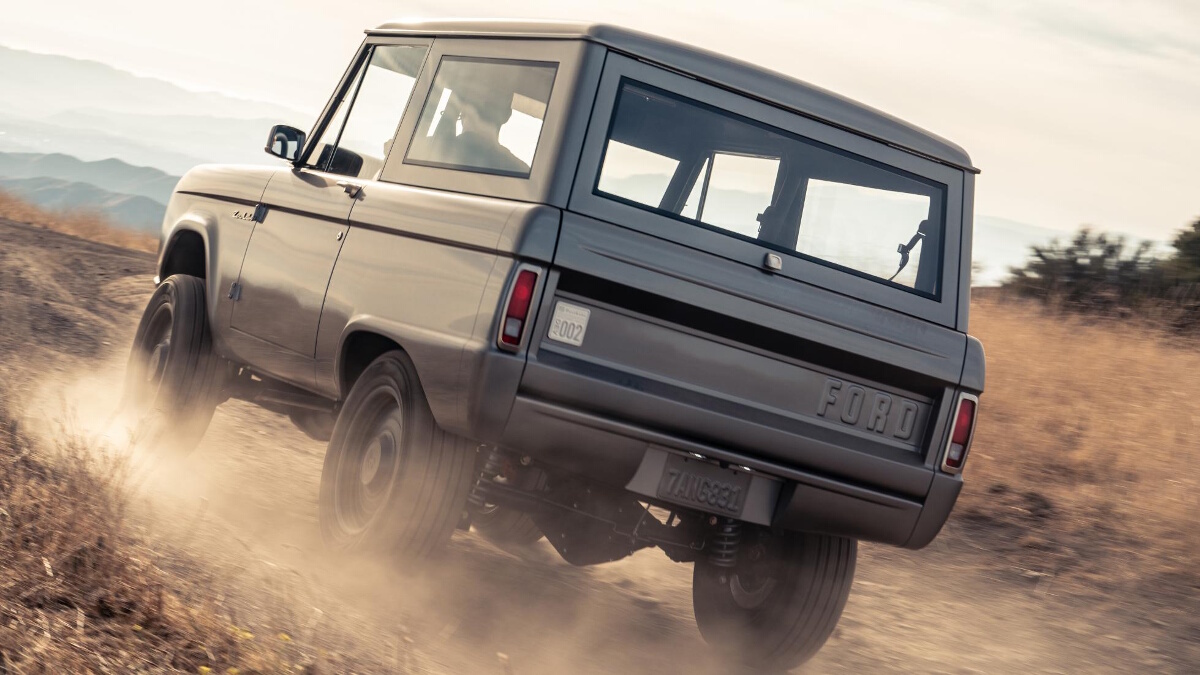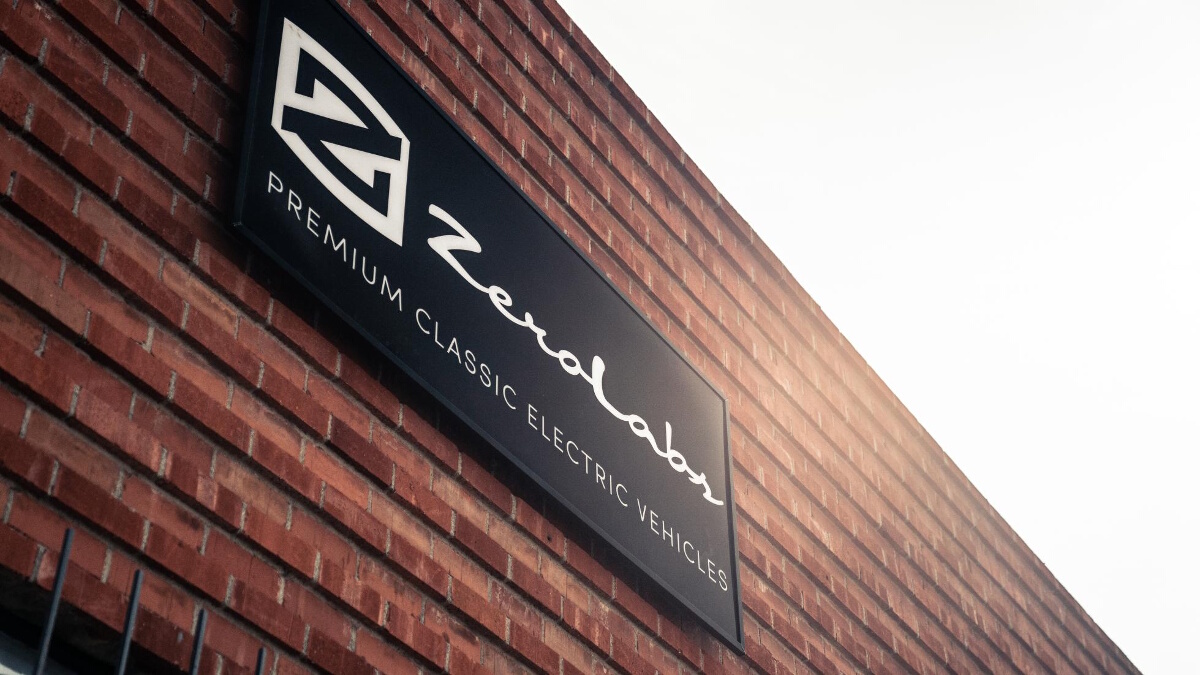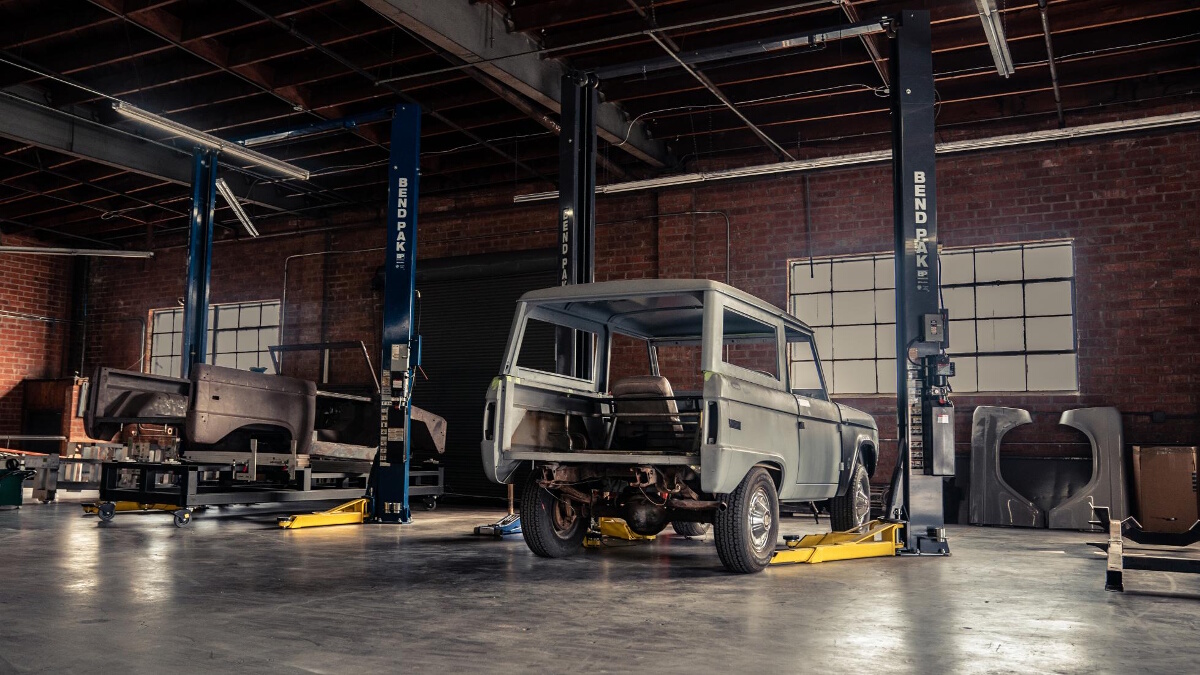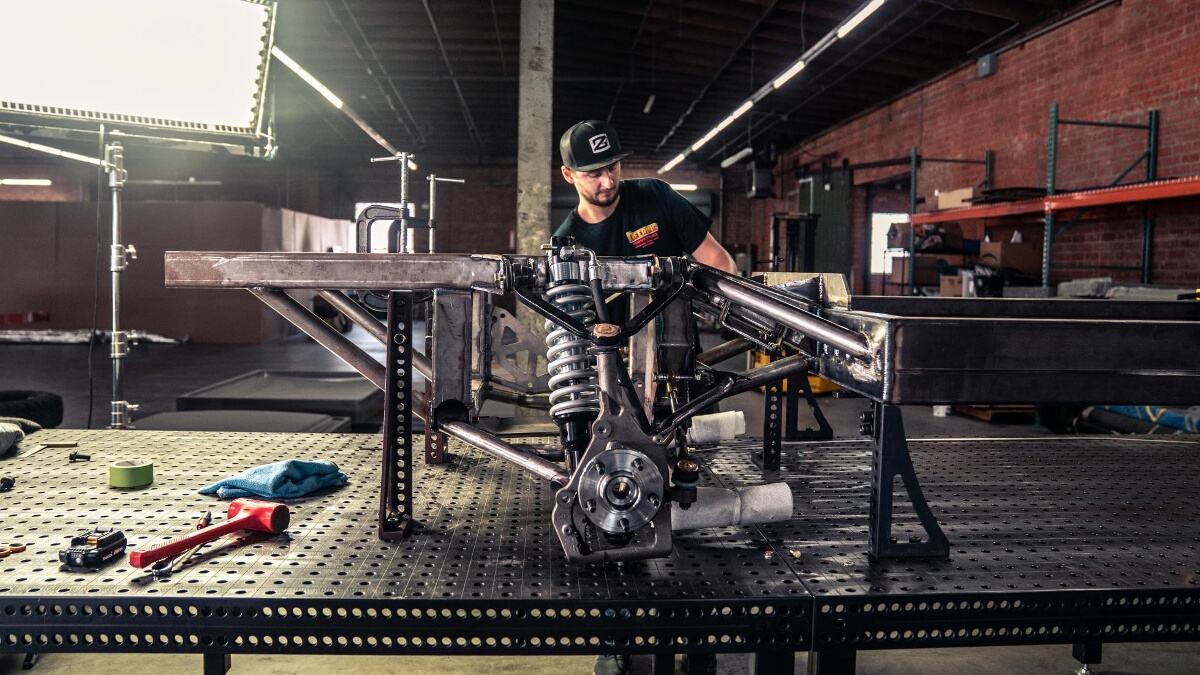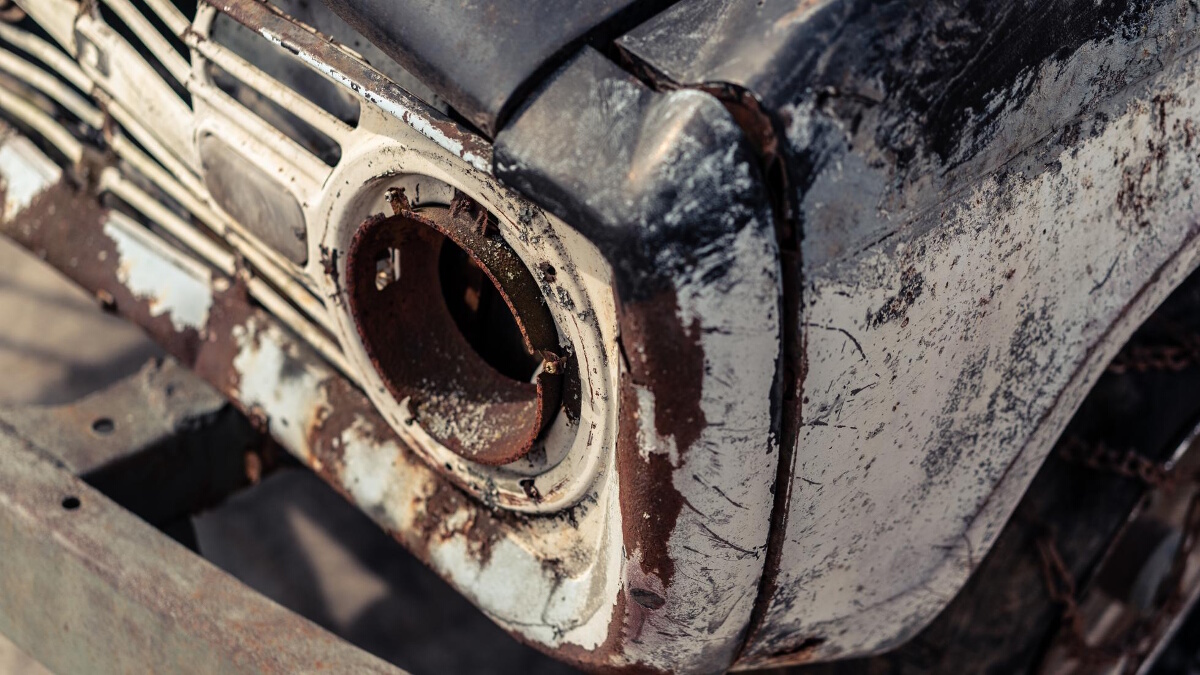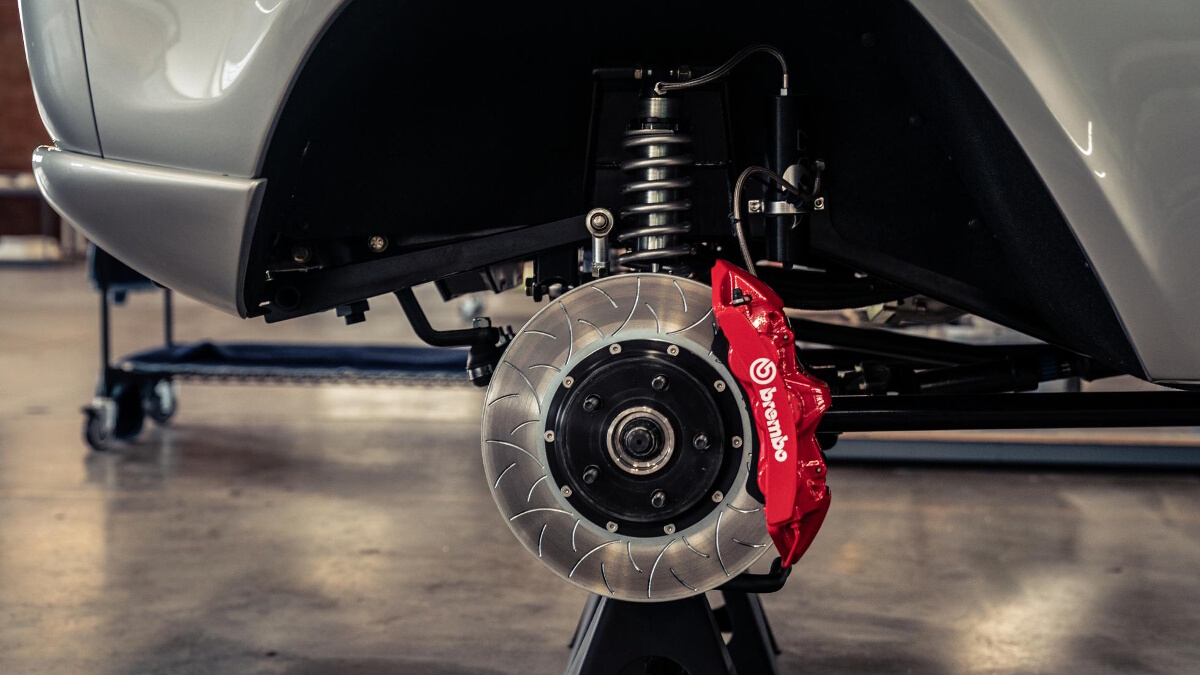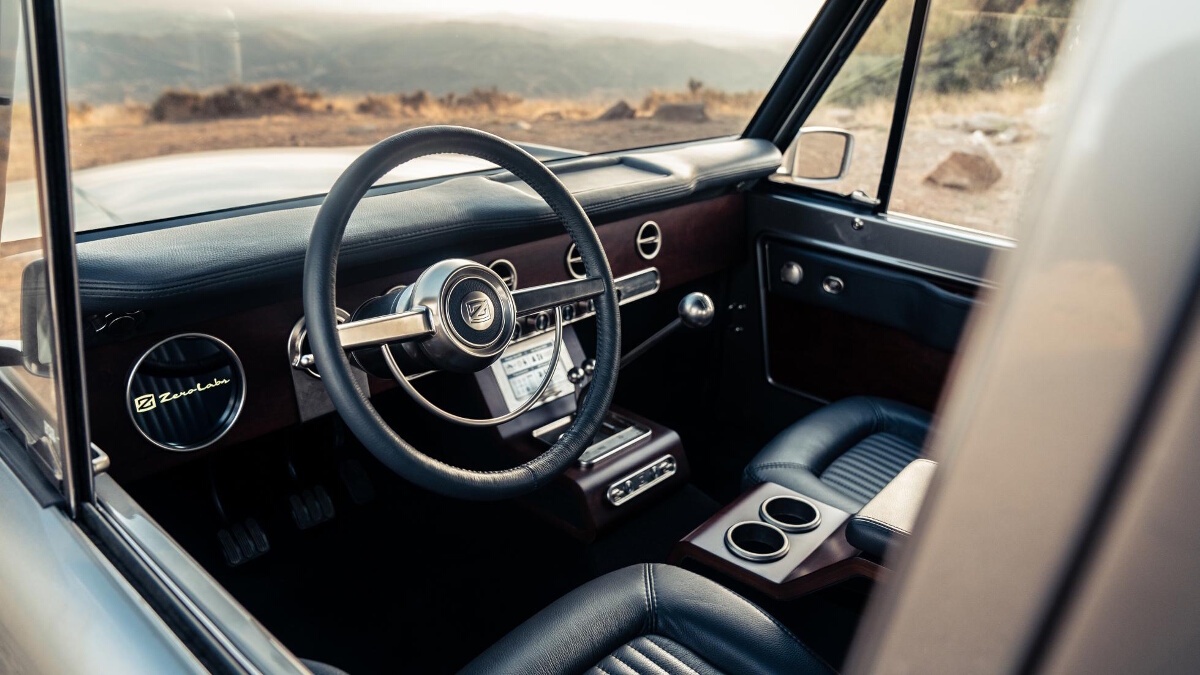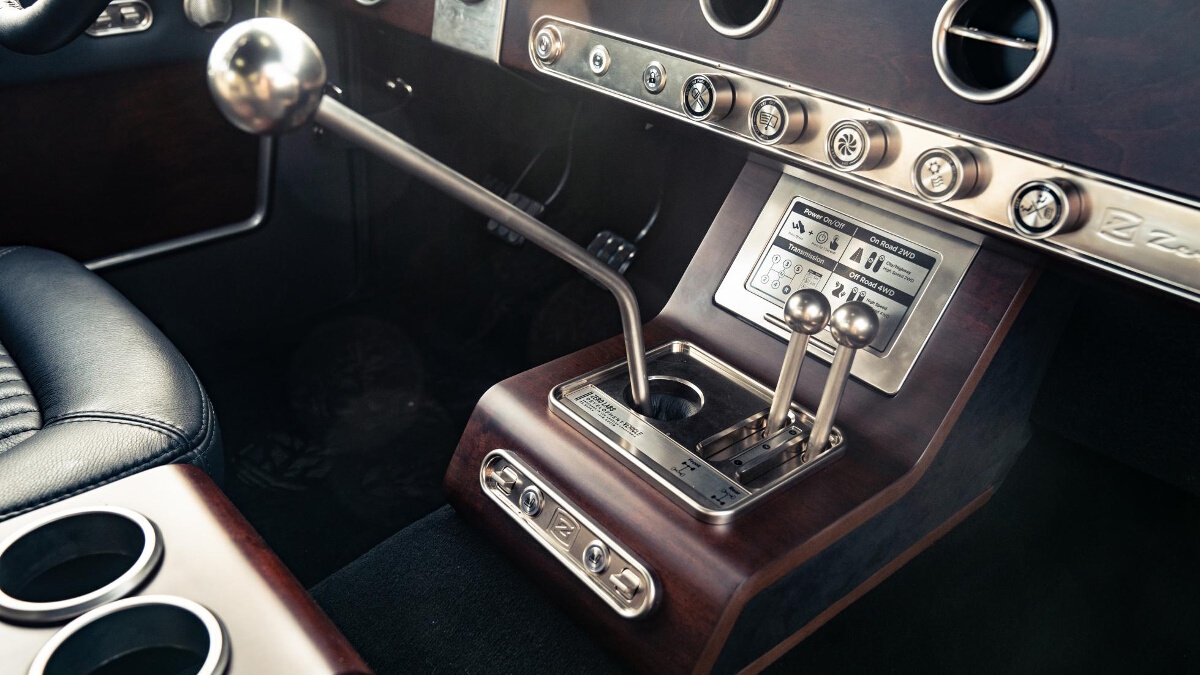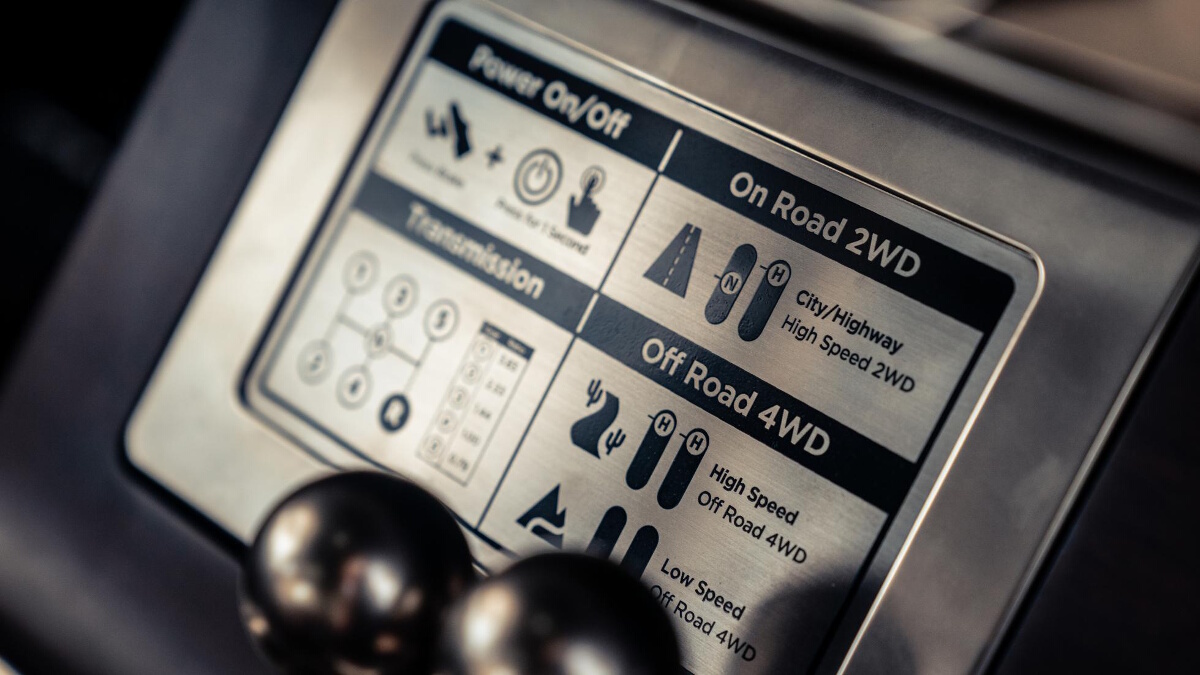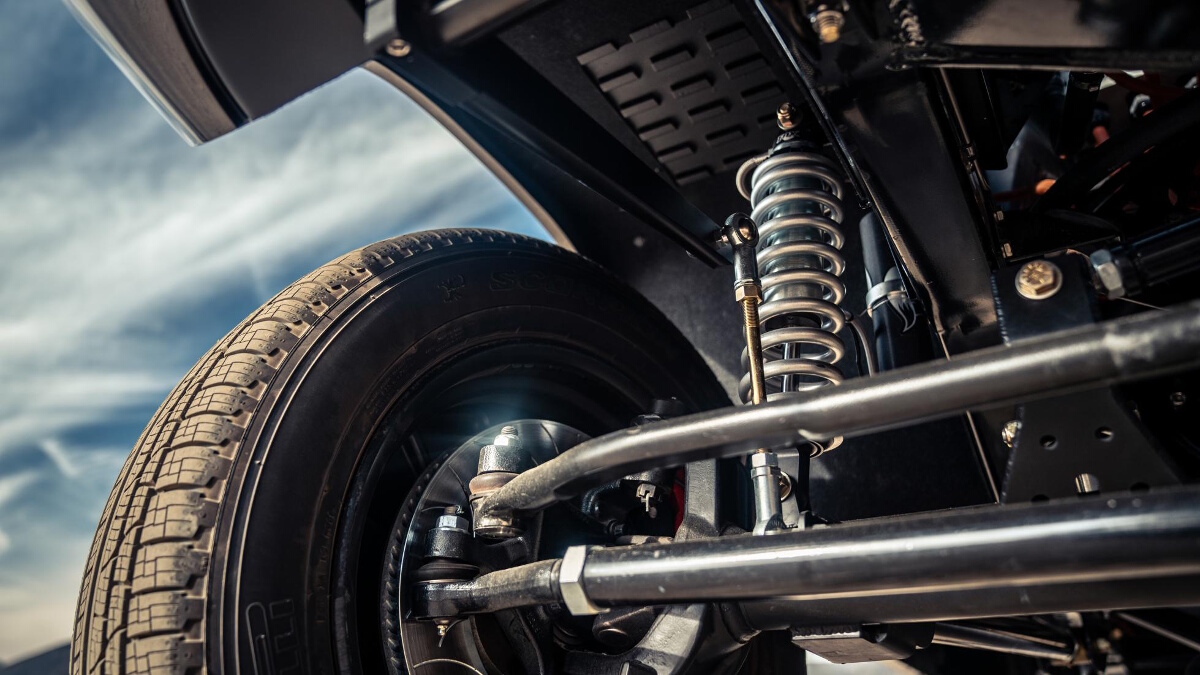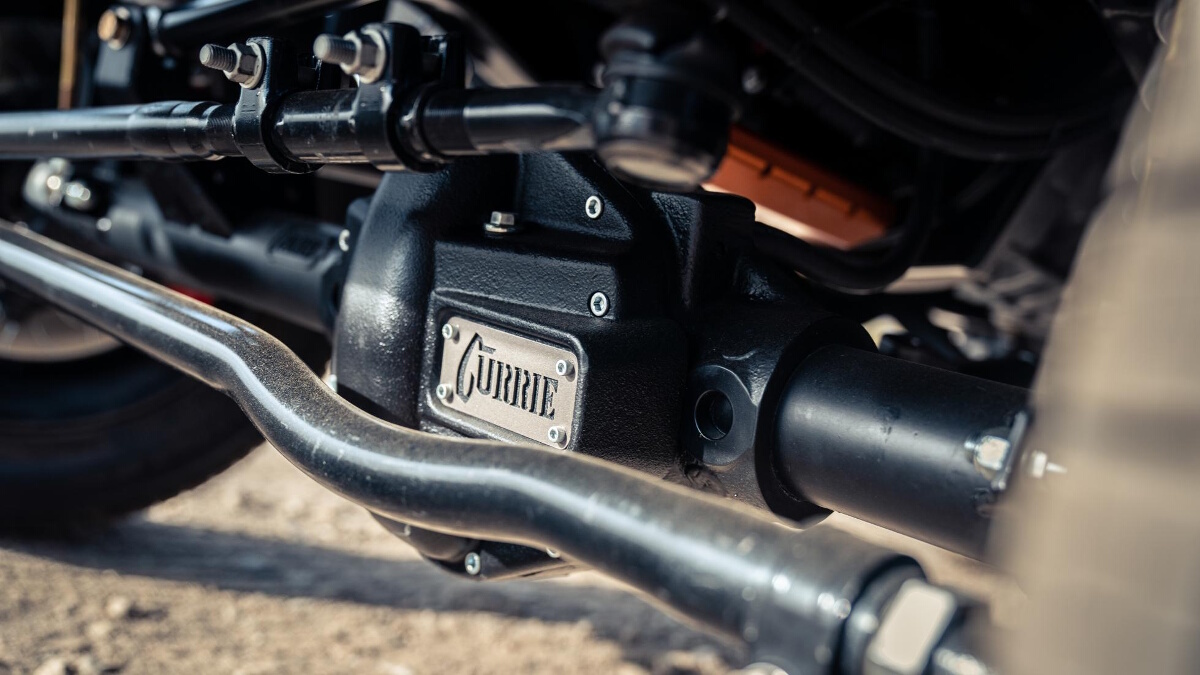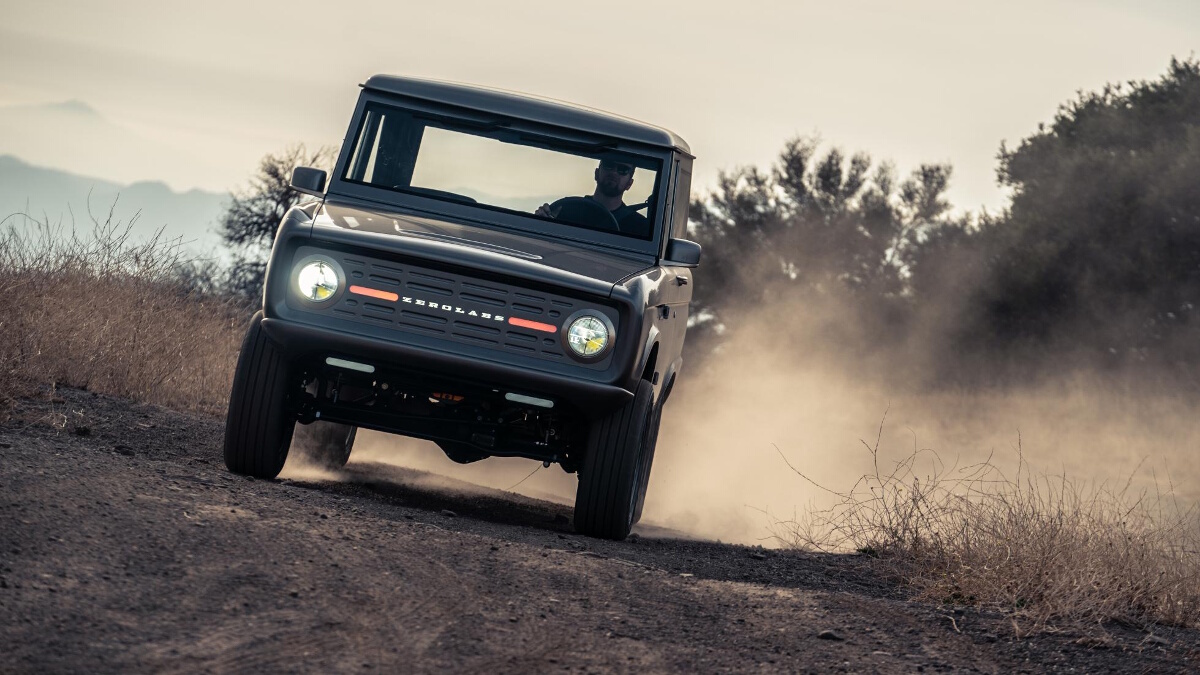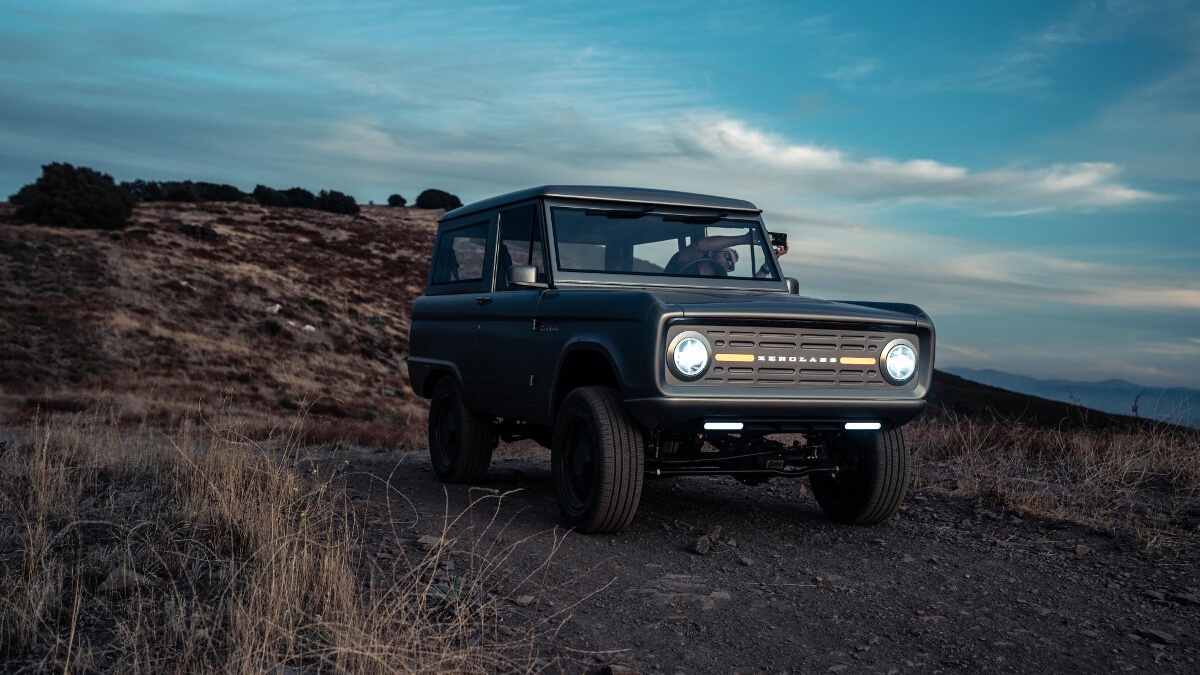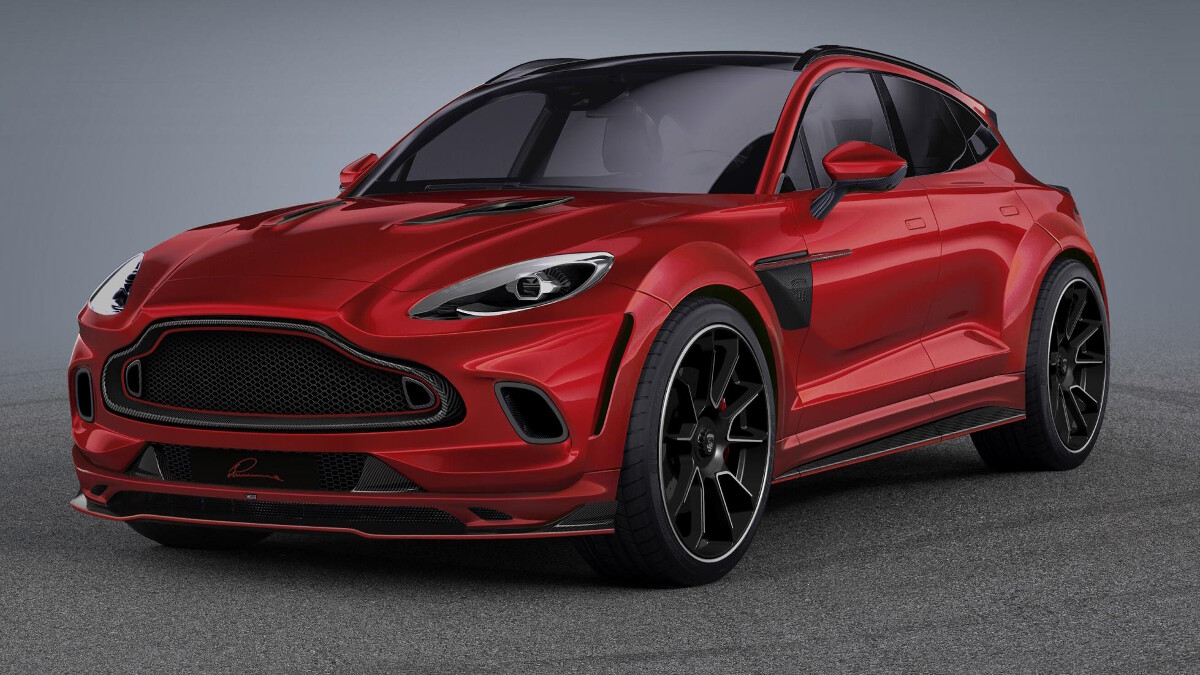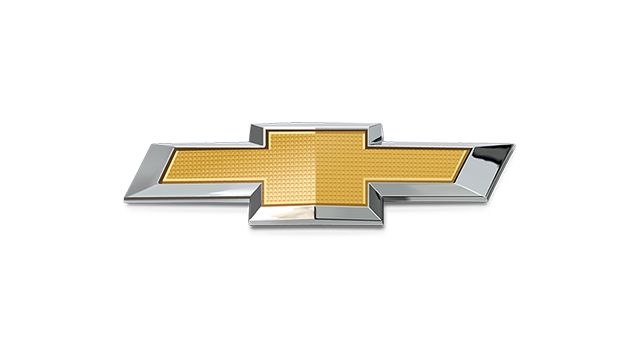“Road” is a mite generous as a description, really. It’s a rocky vein sketched lightly across the ankles of a small-ish mountain. A carriageway busy with everything but traffic, all dust and rocks, and brush that grumpily scrapes itself up out of the dirt as if angry about its own existence. The sun is starting its low pass, which means this vintage Ford Bronco is chased by a blocky shadow a millisecond in second place the whole way, a silhouette softened by the light trail of dust we’re ploughing in our wake as we climb.
We crawl over rocks in low-range, picking lightly at the trail, gently pulling ourselves ever higher until the view reveals itself and we pull to a stop, absorbing the view like taking in a breath, a view painted in muted watercolors across the horizon. It’s a scene that could be pulled from the Sixties, given the age of the car we’re driving. Except when you listen, and look closer. Because one, the Bronco is near silent, even when it’s moving, and two, if you spare this Ford any more than a cursory glance, you’ll realize that this car is the same as a Sixties Bronco in the same way that a cat is a horse. Same basic design architecture, wildly different outcome.
It goes deeper than the modern paint. Or the millimetric carbon-fiber panel gaps that are decidedly unBronco in both material and finish. The re-made body that soothes away some of the original Bronco’s more awkward production necessities. It goes further than the hardcore and respected Currie Enterprises differentials you can see peeping out from underneath the car front and back, or the Fox Racing suspension that you glimpse. Further even than an interior that you could happily mount on a wall as modern art: floating center console modeled on an Eames chair, manual gearstick as tactile a piece of engineering as you could hope for. Because this is a Zero Labs Ford Bronco. It is different because it is re-engineered from the ground up. And it is silent because it is electric.
